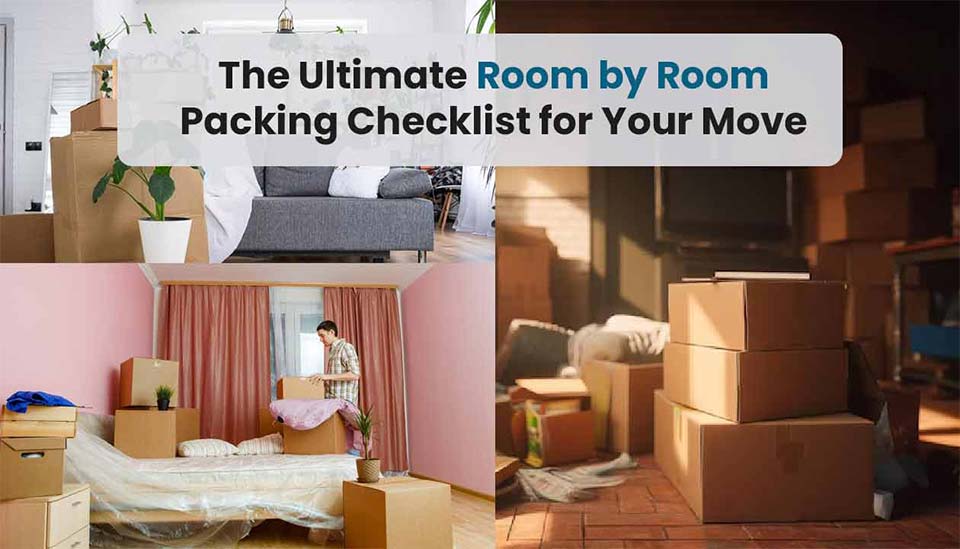House relocation is a rigorous task. We don’t want to leave behind any belongings because we have an emotional connection with them, and packing more items exhausts our energy, not to mention the increase in the shifting charges (the more items you relocate, the higher the shifting cost will be).
Packing is a vital part of the shifting process because if items aren’t packed properly, the belongings are likely to get damaged. At first, packing the whole household might feel like a herculean task, but if you break down the task into achievable targets like room after room, packing doesn’t look that daunting.
But every room has different belongings, and packing a variety of items safely can be complicated. We are all familiar with general packing tips , but when it comes to packing room by room, very few people have the experience. No need to worry, as here is the best room-by-room packing checklist to help you pack your belongings like a pro.
Room by Room Packing Checklist
Garage and storage areas
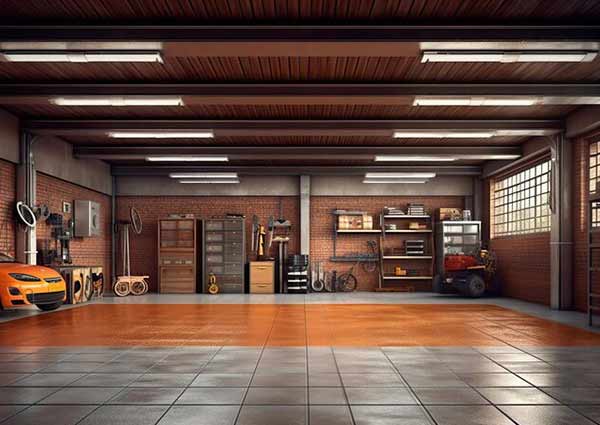
The garage, basement or any other storage area in your house should be the first place to begin the packing proceedings. Garage and storage areas are the most difficult to pack as the garage is highly unorganized and overfilled with belongings. It is best to begin the packing proceedings with the garage and other storage areas, as you will need all your energy. Avoid packing the garage items later, as you will be tired and mentally exhausted to pack a plethora of garage items.
Items in a garage not only take more time to pack, but they are also extremely heavy and dangerous.
Hazardous Materials
The garage is filled with numerous hazardous materials that packers and movers don’t transport. Items such as oils, paints, cleaners, pesticides, fertilizers, etc., are not transported by movers, so use them, dispose them, or move the items yourself.
Gas-powered equipment
- Drain all fuel from the equipment before packing. Run the engine until it stalls to ensure that no residual fuel is left in the tank.
- Disassemble any detachable parts from gas-powered equipment and pack them separately.
- Put protective covers on chainsaws, lawn mower blades and grills.
Power Tools
- Disassemble the power tools and pack them in boxes.
- Pack the power tools in original boxes; if unavailable, pack them in similar boxes.
- Wrap the tools with bubble wrap and bed to prevent any damage.
Hand Tools
- Pack hand tools in original boxes.
- Arrange all the small hand tools and pack them together in medium-sized boxes. Fill the gaps in the box with foam or pillows to reduce shocks.
Garden Tools
- Group similar tools together, such as shovels, rakes, and hoes, to make packing and unpacking more efficient.
- Cover sharp edges or blades with cardboard or foam pipe insulation to prevent injuries and damage to other items.
- Group smaller hand tools, such as trowels, pruners, and hand forks, in small boxes or containers, to keep them organized and easy to find.
Lawn and deck Furniture
- Place screws, bolts, and other small hardware in labelled bags or containers and tape them to the corresponding furniture piece to avoid misplacement.
- Ensure that any loose parts, such as umbrella poles or detachable legs, are securely fastened or wrapped to the main furniture piece.
- Cover furniture with breathable covers or tarps to protect against dust and moisture.
Motor Vehicles
Packing cars and other motor vehicles is quite complicated, and it is better to hire a car Transport Company that will look after the entire packing and shifting process. Our car relocation guide will help you ace car transportation.
Kitchen
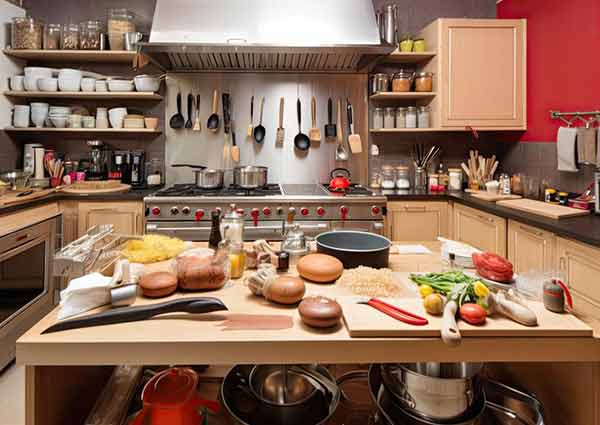
The kitchen is the next big challenge on the list, as it is filled with appliances, fragile items, and numerous small and big items. The Kitchen packing checklist will help you nail the move and safely shift all your belongings. Before packing kitchen items, it is vital to organize them and group them into different categories:
Dishes
- Wrap each dish individually in packing paper or bubble wrap to provide cushioning and protection.
- Consider using dish boxes with dividers or cardboard inserts to separate and cushion dishes, preventing them from moving or knocking against each other during transit.
- Use “Fragile” stickers or markers to alert movers and handlers to handle the boxes carefully.
- Fill any empty spaces in the box with crumpled packing paper, bubble wrap, or foam peanuts to provide additional cushioning and prevent movement during transit.
Glasses
- Reinforce the bottom of the box with extra packing tape to prevent it from giving way under the weight of the glasses.
- Clearly, label boxes containing glasses as “Fragile”.
- Use speciality dish boxes with dividers to keep glasses separated and provide additional protection.
- For extra protection, place crumpled paper or bubble wrap inside each glass before wrapping them individually.
Crockery
- Place heavier items like plates at the bottom of the box and lighter items like bowls and cups on top to distribute weight evenly.
- If packing items with lids, such as casserole dishes or storage containers, tape the lids securely to prevent them from coming loose during transit.
- Clearly label boxes containing crockery as “Fragile”.
- Fill any gaps in the box with packing material to prevent items from shifting or rattling during transit.
- Wrap oddly shaped utensils (spoons, barbecue tongs, etc.) individually.
Food Supplies
- There is no sense in packing and moving your food supplies unless you’re shifting to a nearby location. Movers don’t shift perishable items.
- Bring along your spices because they are pretty expensive, and packing them is also easy. (Pack them in seal-tight containers so they don’t leak).
- Don’t buy food supplies when moving day is near; it will get wasted.
Small Kitchen Appliances
- Use packing peanuts or crumpled paper to fill empty spaces in the box and prevent items from shifting during transit.
- Clean and dry your mixers, blenders, toasters, coffee makers, and other small kitchen appliances.
- Remove any detachable parts and wrap them separately.
- Use sturdy cardboard boxes or plastic bins appropriate for the size and weight of the appliances.
Large Kitchen Appliances
- Manage the cables and hoses so they don’t get tangled.
- Empty and clean your large appliances, like the refrigerator, a couple of days before the move.
- Lock the doors of large appliances so it doesn’t get open in the transportation process.
- Pack large appliances in original boxes; if original boxes are available, go for similar-sized boxes.
- Wrap appliances in moving blankets to prevent scratches, dents and other damages.
Dining room
The dining room is filled with delicate and expensive items like artwork, china, crystal, and furniture. Packing a dining room takes a lot of time, but with the dining room Packing checklist for moving, you can pack the dining room belongings swiftly.
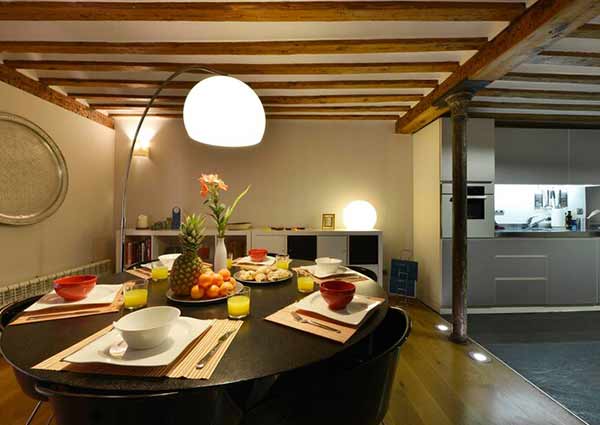
Lamps and Chandeliers
- Remove light bulbs from lamps and chandeliers and pack them separately in a padded container.
- For larger or more delicate chandeliers, invest in custom wooden crates for added protection during transport.
- Clearly label boxes containing lamps and chandeliers as “Fragile”.
- Choose sturdy cardboard boxes with dividers or compartments for packing lamps and chandeliers.
- Wrap glass shades, covers, or crystals individually with bubble wrap or packing paper. Pay extra attention to fragile areas to prevent chips or cracks.
- Disassemble any detachable parts of the lamp or chandelier, such as bases, arms, or decorative elements.
Artwork
- Purchase corner protectors or cardboard edge protectors to shield the corners of framed artwork from impact.
- Use acid-free tissue paper or glassine paper to wrap the artwork, providing a protective barrier against moisture and scratches.
- If packing multiple artworks in the same box, place a layer of cardboard or foam padding between each piece to prevent them from rubbing against each other.
- Fill any empty spaces in the box with packing material, such as bubble wrap or foam peanuts.
- Vases, statues, and other art pieces are best packed in custom crates. If you can’t go for custom crates, use heavy cushioning and sturdy corrugated boxes.
Dining Room Furniture
Dining Room Table
- Disassemble the dining room table’s legs to make it easier to transport and pack.
- Wrap the tabletop with moving blankets, furniture pads, or bubble wrap to protect the surface from scratches and dents.
- Place the tabletop in a sturdy cardboard box or custom-sized crate.
Chairs
- Wrap each chair individually with moving blankets, bubble wrap, or furniture pads.
- If stacking vertically, place cardboard or foam padding between the seat and backrest of each chair to prevent them from scratching or rubbing against each other.
- Use straps or tie-downs to secure the chairs in place and prevent movement.
Cupboards
- Remove all items from the cupboards and thoroughly clean them before packing to prevent dirt or spills from damaging the furniture during transit.
- If your cupboard has shelves or drawers, remove them and pack them separately to prevent damage.
- Cover the shelves and drawers with plastic sheets to prevent it from scratches and dents during transit.
- Clearly label the box with the contents and indicate which side should be kept upright to prevent damage to the cupboard.
Living room
The living room is usually the biggest room in the house and takes up plenty of time to pack. The living room packing checklist for move simplifies the packing process and ensures you a stress-free move.
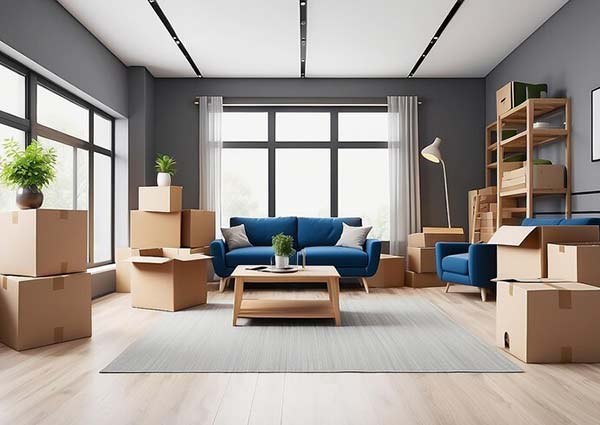
TV
- Pack the TV in its original box; if the original box is not available, go for a similar-sized box.
- While packing the TV, ensure no gap or space is left, as it will lead to movements and vibration.
- Take a picture of all the cables and setup of TV so you can set it up again in the new house.
- If your set is mounted to a wall, detach it carefully and place any hardware parts in the bag with the cords.
- Wrap the TV in a blanket to prevent it from scratching during transit.
Books
- Consider using small to medium-sized boxes to prevent them from becoming too heavy to lift.
- Pack books of similar size and weight together to distribute the weight evenly in each box.
- Lay books flat in the box to prevent them from bending or warping during transit.
- Fill any empty spaces in the box with packing material, such as crumpled paper or bubble wrap.
Living Room Furniture
- Bookshelves— Remove all books, decor, and other items from the shelves before packing. If your bookshelf is modular or has detachable shelves, disassemble it to make it easier to pack and transport. Wrap each shelf individually with bubble wrap or moving blankets to protect it from scratches and damage.
- TV Cabinets— Use packing tape or rope to secure doors and drawers to prevent them from opening during transit. If your TV cabinet houses electronics such as a TV or DVD player, wrap them individually in bubble wrap or moving blankets for protection.
- Couches- Vacuum and clean your couch to remove any dirt, crumbs, or debris before packing. Use plastic wrap or furniture covers to protect the upholstery from stains, tears, and other damage during transit.
Rugs
Roll each rug tightly from one end to the other, starting from the longest side, to prevent creases and wrinkles. Use packing straps or twine to secure the rolled rug tightly and maintain its shape during transit. If the rug is going into storage or is at risk of getting wet, wrap it in plastic sheeting to protect it from moisture.
Curtains
Fold the curtains neatly to prevent wrinkles and creases. If they are very large, you may need to fold them in sections. Place tissue paper between folds to prevent them from sticking together and to minimize wrinkles.
Home office
After the pandemic, many people built home offices so that their work lives would not be affected. Home offices are filled with numerous delicate and valuable items, and if not packed properly, the items can get damaged.
Computer

- Take a photo of the setup, cables, and wires to reassemble the computer easily.
- Take a backup of all your data and upload it to cloud storage so you don’t lose crucial data.
- Pack storage devices, like hard drives, SSDs, etc., in an anti-static poly bag to prevent them from being corrupted by static.
- Place the computer tower in its original packaging if available. If not, wrap it in anti-static bubble wrap or foam padding to protect delicate components.
- Wrap peripherals such as monitors, keyboards, and mice individually in bubble wrap and place them in sturdy boxes. Fill any empty spaces with packing material to prevent shifting.
Office Furniture
- Keep track of screws and hardware by storing them in labelled bags.
- Use bubble wrap or furniture blankets to wrap any delicate or glass parts of your office furniture, such as tabletops or glass doors.
- Place disassembled furniture parts and components wrapped in sturdy boxes or move them in moving blankets for added protection.
Documents
Sort through your documents and organize them into categories such as financial records, legal documents, and personal files. If storing documents in boxes, consider using plastic file storage boxes with lids to protect them from moisture and dust. Scan important documents and save them digitally as a backup.
Child’s room
The child’s room is a complete mess. It is full of toys, games, and other belongings. Packing the child’s room is vital because the kid has a special connection with the belongings.
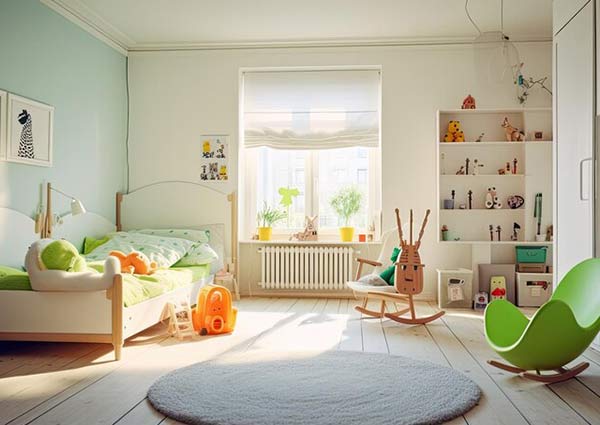
Toys and Games
- Before packing, involve your child in sorting through their toys and games. Donate or discard any items they no longer use or have outgrown.
- Pack toys and games in clear plastic bins so your child can easily see what’s inside. Label each bin with the contents for easy identification.
- For delicate toys or games, wrap them individually in bubble wrap or packing paper to prevent breakage.
- Keep sets of toys or games together by placing them in sealed plastic bags or containers to prevent pieces from getting lost.
Clothes and Shoes
- Sort through your child’s clothes and shoes, donating or discarding items that no longer fit or are worn out.
- Consider packing your child’s clothes in wardrobe boxes with built-in hanging rods. This will keep them wrinkle-free and easy to unpack.
- Roll clothes instead of folding them to save space and prevent wrinkles. Place rolled clothes in plastic bags to keep them clean during transit.
- If you’re moving during a change of seasons, pack clothes that won’t be needed immediately in sealed bins or vacuum storage bags to save space.
- Pack a separate bag with a few days’ worth of your child’s clothes and essentials that they’ll need immediately upon arrival at your new home.
Child’s room furniture
- Use bubble wrap or furniture blankets to wrap any delicate or glass parts of your child’s room furniture, such as mirrors or decorative elements.
- Place disassembled furniture parts and wrapped components in sturdy boxes or wrap them in moving blankets for added protection.
- Use furniture blankets or moving pads to protect the surfaces of beds, dressers, desks, and other furniture from scratches and damage during transit.
- Use packing tape or rope to secure drawers and doors to prevent them from opening during transport.
Bathroom
Even though the bathroom is the smallest room in the house, packing it is quite tricky. There is a wide variety of items in the bathroom, and packing them all can lead to confusion. Here’s how to pack bathroom items:

Cosmetics
- Before packing, go through your bathroom cosmetics and declutter items that are expired, unused, or no longer needed.
- Wrap fragile items such as glass bottles or jars in bubble wrap or tissue paper to prevent breakage.
- Group similar items together by category, such as skin care products, hair care products, makeup, and toiletries.
- Use rubber bands or hair ties to secure pump dispensers and prevent accidental pumping during transit.
Liquid Products
- Fill containers only three-quarters full to allow room for expansion and contraction during changes in altitude or temperature.
- Transfer liquids into leak-proof containers specifically designed for travel.
- Wrap each liquid container with plastic wrap or adhesive tape around the cap to ensure it stays tightly sealed during transit.
- Place liquid containers upright in your luggage or moving boxes to minimize the risk of spills.
Towels and shower curtains
Wash and thoroughly dry your towels and shower curtains before packing to prevent mildew and odour during transit. Roll towels instead of folding them to save space and prevent wrinkles. Place rolled or folded towels and shower curtains in large plastic bags to keep them clean and protect them from moisture during transit. Remove shower curtain hooks or rings and pack them separately in a labelled bag or container.
Bedroom
The bedroom should be the last room you pack because you will need the bed to sleep until the moving day comes. You can pack some items that aren’t required immediately and a change of clothes for the moving day.
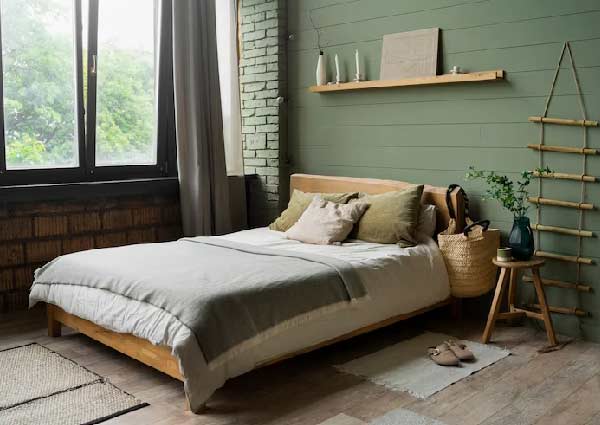
Beds and mattresses
- Disassemble the bed as far as it can go so transporting it becomes easier. Also, Keep all screws, bolts, and hardware in a labelled bag or container.
- Use mattress bags or plastic wrap to protect the mattress from dirt, dust, and moisture during transit.
- Wrap bed frame components with moving blankets or bubble wrap to prevent scratches and damage while shifting.
Clothes
- Before packing, go through your clothes and declutter items that you no longer wear or need.
- Pack hanging clothes in wardrobe boxes with built-in hanging rods to keep them wrinkle-free and easy to unpack.
- Fold clothes neatly and roll them instead of folding them to save space and prevent wrinkles.
- Pack rolled clothes in sturdy boxes or suitcases, filling any empty spaces with smaller items or packing material.
- Pack clothes that are out of season in vacuum-sealed bags to save space and protect them from dust and moisture during transit.
Shoes
- Clean shoes thoroughly before packing to remove dirt and debris
- Wrap each pair of shoes in tissue paper to prevent scuffing and damage during transit.
- Place shoes in sturdy boxes or plastic bins to protect them from being crushed or damaged.
- Insert shoe trees or stuff shoes with tissue paper or socks to help them retain their shape during transit.
Conclusion
With the above room by room packing checklist, you can pack all your belongings like a pro. To make the packing process smoother, start early and get help from friends and family. By following the above tips you will complete the task in the fastest and most efficient way possible.
- Top Moving Industry Statistics in 2025 - December 6, 2024
- Top 12 Reasons to Move to Bangalore - November 8, 2024
- Griha Pravesh Muhurat 2025: Month-wise Dates and Timing - October 5, 2024

